Prehistoric - Blog Posts
holy shit, this is fantastic! Great job, #paleostream!

Another sketch brought to you by #paleostream
Euthecodon, a giant relative of the dwarf crocodile, catching a flamingo mid air.
if you think the ocean now is a scary fuck then you haven’t seen the scary fuck that is the prehistoric ocean
so im watching the history channel on youtube (i could tell you so much on short nosed bears rn) but i just finished watching this thing called the mosasaur and its your pretty basic mega water dinosaur, 50 feet long, eel tail, sonar, doesn’t chew its food etc, but then it got dark
these shits were top predators, no competition whatsoever…..except from themselves. the narrator was saying that even though there was nothing to oppose them, they somehow continued to evolve into like fifty 50 different species of this mega predator. And its really cool because it started as a three foot lizard and in just 6 million years it became “the ultimate success story of evolution”.
they had these weird funky teeth too. not only were they really big and strong like you’d expect but they had teeth in the roof of them mouth cuz they’d slide their dinner down their mouth like a conveyer belt. and since their so big you’d think wow how did no one see them? apparently sea creatures are frickin blind or something bc this megabeasty would just lie on the frickin bottom of the ocean and wait for something to swim up. then it would propel its ass up with this snaky tail and just boosh i ated you
but mosasaurs kept evolving even though they were literally the top predator. why is that?? that doesn’t happen in nature. turns out they were causing themselves to evolve. turns out they’re one of the only species (including humans) that naturally commits murder aka kills their own kind. they’ll bite each others heads until they can get a good grip then one of them snaps the neck. and they didn’t even eat the other guy. they did it. for. fun. (apparently they thrive on violence????)
and im over here going like wtf. but then it got worse. these scary ass motherfuckers began to go anywhere they pleased. they evolved even more and then moved into fresh water. like swamps and rivers. thats terrifying. NOTHING On eARth could stop them.
Nothing on Earth ;) aka enter the extinction comet
BUT then I learned that even the bigass dino killing comet didn’t even kill the thing. They literally had to starve to death because all of their prey died out. NOPE not them. THey didn’t die out because they’re like dinosaur gods or some shit. EVERYTHING DIED BUT THEM

Plesiosaurus skeleton from the Houston Natural History Museum!
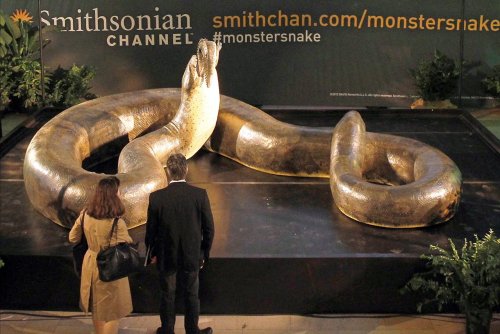

The Titanoboa, is a 48ft long snake dating from around 60-58million years ago. It had a rib cage 2ft wide, allowing it to eat whole crocodiles, and surrounding the ribcage were muscles so powerful that it could crush a rhino. Titanoboa was so big it couldn’t even spend long amounts of time on land, because the force of gravity acting on it would cause it to suffocate under its own weight.










Fontainebleau forest in France
All these are post-organic material: a petrified bones and organs of giants.
TOP 10 PREHISTORIC OCEAN PREDATORS

10. ANOMALOCARIS (~ 525 Ma) This one metre long invertebrate surely deserves to be included on the list, being one of the first complex oceanic predators to ever have existed. Anomalocaris stalked the Cambrian oceans, viewing the world with a deadly new evolutionary innovation - eyes. Complex eyes allowed this creature to storm its way to the top of the food chain, and with powerful appendages covered in spines it had no trouble devouring prey with tough carapaces. Whilst Anomalocaris is dwarfed by the other contenders on this list, it was still over 10 times larger than any other animal of its time.

9. KRONOSAURUS (125-99 Ma) Kronosaurus, a Cretaceous mosasaur, is named after the Greek titan, Cronus. Its name is well deserved as this ancient beast was a remarkably powerful being. Kronosaurus could reach up to 10 metres long and had a mouth full of sharp, conical teeth. Unlike most other mosasaurs its tail was relatively short, however, evidence shows that Kronosaurus has immensely powerful fins and a pectoral girdle making it an impressive swimmer and hunter.

8. HELICOPRION (290-250 Ma) Helicoprion has astounded scientists since its discovery over 100 years ago. It is iconic for its bizarre spiral of teeth, there are still debates on where exactly these teeth where on the shark with proposals stating they were inside the mouth, on the tip of the tail, the dorsal fin or hanging under the jaw. The most commonly accepted location of the teeth is inside the lower jaw enabling Helicoprion to cleanly slice its prey into pieces.

7. XIPHACTINUS (~110-70 Ma) Xiphactinus was an extraordinary fish that lived during the Cretaceous. It was an esteemed predator that could reach an incredible 6 metres in length and specimens are renowned for their stunning preservation. One such example was 4 metres long and found with another exceptionally well preserved fish just short of 2 metres inside it implying that this particular Xiphactinus individual died shortly after its last feast. Xiphactinus had immensely sharp, slim teeth and an unmistakable underbite which was a possible aid when snaring creatures from below.

6. TYLOSAURUS (86-75 Ma) Tylosaurus is considered a mosasaur and was a vivacious predator all be it smaller than its relative Mosasaurus. Tylosaurus could reach up to 15 metres in length and was one of the apex predators of its day. Fossilised stomach contents of Tylosaurus contain fish, sharks, turtles and other marine reptiles. Despite having an impressive set of teeth, the frontal areas of the jaws exhibit a large reduction in tooth size as well as a more heavily reinforced snout in comparison to other mosasaurs suggesting that Tylosaurus may have rammed into victims with immense force damaging prey internally.

5. MOSASAURUS (70-66 Ma) The mosasaurs ruled the Cretaceous oceans and Mosasaurus was no exception. It could reach up to 17 metres long, longer than most other mosasaurs. Mosasaurus had a strong jaw packed with numerous conical teeth, bite marks of which have been found in huge prehistoric turtles and ammonites suggesting that Mosasaurus was a formidable hunter capable of catching large prey. Mosasaurus was a profound swimmer with strong paddle-like limbs and a huge tail capable of rapidly accelerating the animal when required.

4. DUNKLEOSTEUS (382-358 Ma) Dunkleosteus terrorised the oceans around 370 million years ago and was part of a dynasty known as the placoderm fish (meaning armoured). Dunkleosteus could reach a whopping 6-10 metres in length and probably weighed over a ton. The skull was made up of huge, solid bony plates giving unrivalled protection allowing them to dominate the oceans. Placoderm fish were some of the first organisms to have a mobile jaw, as can be seen in Dunkleosteus’ impressive shearing plates which were used to slice cleanly through prey. Despite an revolutionary jaw, Dunkleosteus could not chew and several fossilised regurgitated remains of its meals have been found that the giant fish simply could not stomach.

3. DAKOSAURUS (157-137 Ma) Dakosaurus was the largest of a group of marine reptiles that were distant relatives of crocodiles. Dakosaurus could reach up to 5 metres long and had a streamlined body with large paddle-like fins and a long muscular tail implying that is was a very efficient swimmer. The diet of Dakosaurus consisted mostly of fish. The teeth of Dakosaurus are lateromedially compressed and serrated which is a similar morphology to modern killer whales indicating that Dakosaurus was an apex predator of the Jurassic oceans. Skull fenestrae provides evidence that Dakosaurus had very large adductor muscles (which are responsible for the jaw closing) and so it was certainly capable of a forceful bite.

2. LIOPLEURODON (160-155 Ma) Liopleurodon stormed the Jurassic oceans, its huge 7 metre long frame effortlessly cruised through the water. The skull itself could reach a massive 1.5 metres long with a jaw that was packed with teeth up to 10cm long and was capable of an immense bone-crushing force. Liopleurodon was a remarkable hunter with the ability to swim with its nostrils open and so could use its powerful sense of smell to track prey from afar, much like sharks do. Liopleurodon most likely had good camouflage such as a lighter underside and a darker topside so it would blend in with the water to prey above and below.

1. MEGALODON (~16-2.6 Ma) Megalodon rightfully deserves the top position of the greatest prehistoric ocean predators, ruling the seas for an incredible 14 million years. Megalodon has been estimated to reach up to 18 metres in length and weighing over 40 tonnes. Megalodon is known for its huge 6 inch teeth which were serrated on both sides for an efficient slicing action. Fossils of Megalodon’s prey have also been found, the shark appeared to have adapted its hunting tactics for different sized prey; for smaller prey they would just use their bone crushing bite to pulverise internal organs, but for larger prey they would bite or rip flippers off of creatures to immobilise them and then go in for the kill. The exact bite force of Megalodon has been estimated at around 110,000 N which was more than enough to shatter even the most robust bones. The hunting methods of Megalodon will unfortunately remain a mystery but it was been hypothesised that they swam at great depths and used short bursts of speed to swim up and tear into their preys vulnerable underbelly. Sharks have existed for over 420 million years and still continue to be some of the most successful predators alive, Megalodon is a perfect example of how deadly they can be.
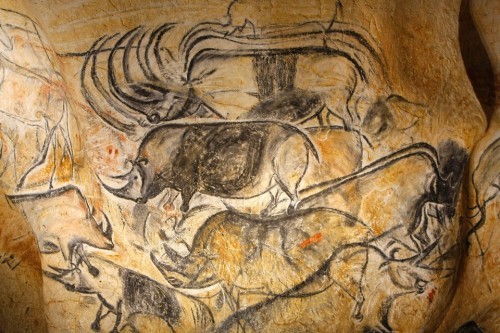

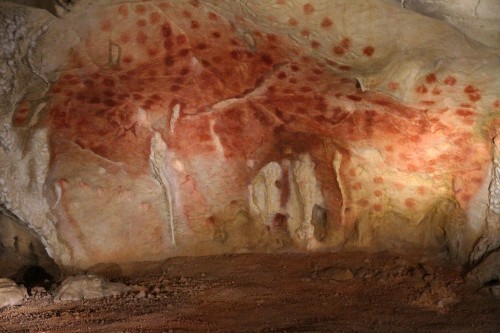

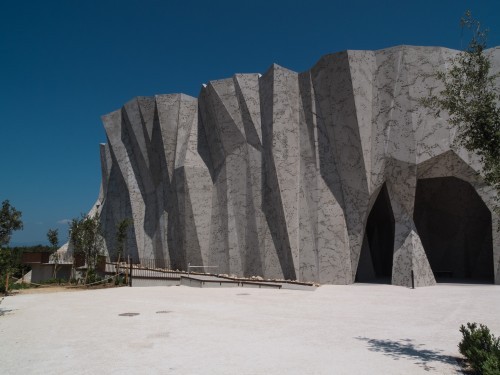
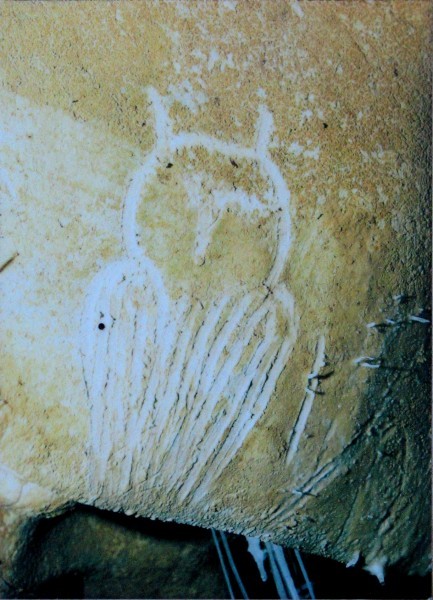
CHAUVET CAVE:
THE Chauvet Cave (also known as the Chauvet-Pont-d’Arc Cave) is a Palaeolithic cave situated near Vallon-Pont-d’Arc in the Ardèche region of southern France that houses impeccably preserved, exquisite examples of prehistoric art.
Now reliably dated to between c. 33,000 and c. 30,000 years ago, the numerous and diverse animals that dot the interior walls of the cave – both painted and engraved – show such high artistic quality that they were initially thought to have been closer in age to the similarly stunning, but much younger art in caves such as the Lascaux Cave. Its age and artistry have made us reconsider the story of art as well as the capabilities of these humans. The cave has been granted UNESCO World Heritage status.
Read More
Article by Emma Groeneveld on AHE
It all makes sense now. A hot real estate market drove mammoths to extinction.
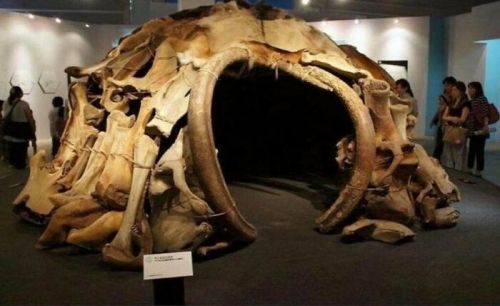
In 1965, excavations in Mezhyrich, Ukraine, revealed the presence of 4 huts, made up of a total of 149 mammoth bones. These dwellings, which are about 15,000 years old, are some of the oldest shelters known to have been constructed by pre-historic man.


